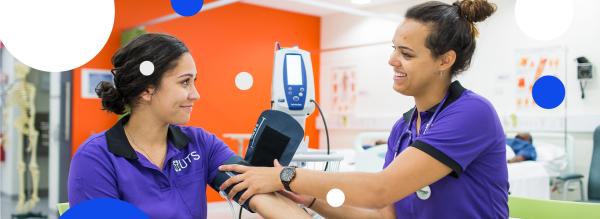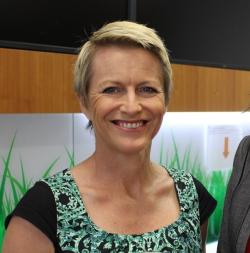
Putting Community front and centre—Indigenous decision-making in public health
Despite improvements in health outcomes over the last 10 years, Indigenous life expectancy is still almost 10 years less than that of the general population. Empowering Aboriginal and Torres Strait Islander communities to take control of their health could make a difference.

Dr Nikki Percival, Associate Professor, School of Public Health
Profile page
Nikki Percival, Associate Professor at the Australian Centre for Public and Population Health Research, has spent much of her career working with Aboriginal and Torres Strait Islander communities in the Northern Territory and Queensland.
Her approach to change, shaped by the experience—and the frustrations—of developing public health policy for government, aims to give Indigenous communities a place at the table when it comes to fostering solutions.
“Aboriginal people have said for a very long time that their participation in decision-making is key to high-quality programs. If they’re not involved in the initiatives that are meant to benefit them, its not going to work,” she says.
“What we’re doing [through our research is] capturing insights from people living and working in Aboriginal communities, and then packaging this wisdom in a way that make sense to both the community and decision-makers. Research can help identify how communities think, feel, see a chronic issue like kid’s ear health—this can then help guide development of strategies and solutions. We have a responsibility to disseminate this knowledge in a way that will ensure Aboriginal voices are heard.”
Ear health is a salient example—kids in Far North Queensland have the highest rates of middle ear infections in the world. But like other chronic diseases in Aboriginal and Torres Strait Islander communities, such as heart disease and diabetes, it doesn’t have a simple solution.
“Parents are worried about housing and overcrowding and getting their kids to school,” explains Nikki. In this context, ear infections and making sure kids are blowing noses—a simple but key strategy to prevent them—can seem less important.
“Our health system is orientated toward treating illness, but it doesn’t emphasise prevention and we cannot realistically expect it to address these issues on its own,” Nikki says.
“Currently when [a hearing problem is identified], the ears are cleaned and medication is prescribed, but what that doesn’t do is actually address the underlying conditions like housing situations, the hygiene, the things that actually cause infections in the first place.”
The failure of health policy in Aboriginal and Torres Strait Islander communities is serious—the federal government’s Closing the Gap targets are public acknowledgement of the fact—but untreated ear infections can have particularly devastating impacts on kids, families and remote communities.
Untreated they can leave kids with lasting hearing loss frustrated by school and at a disadvantage socially. This increases risk-taking behaviour that lands them in trouble as teenagers and adults. Empowering communities to take control of their health and contribute to realistic policy—one that is applicable to daily life—is one part of the solution, says Nikki.
“We also need test our approaches systematically and facilitate better collaborations between community, Aboriginal organisations and government agencies if we’re serious about creating lasting change,” she says
The benefits of listening Aboriginal and Torres Strait Islander people to understand the most effective approaches when it comes to promoting health and tackling preventable disease in their communities extend well beyond ear infections.
“I have a picture of my daughters on the beach,” Nikki says. “I also have photos of Aboriginal children, who are about the same age of my daughters, on Galiwinkua plane ride from Darwin and one of the most remote and beautiful places on earth. My girls, in all likelihood, will live until they’re 80 plus. Yet, the children I met on Galiwinku, playing on the beach, having a fantastic time—they’re life expectancy is about eight or nine years less. This statistic is both compelling and shameful. How can this be? Through my research, I hope play a role in changing that.”
The Problem
Aboriginal and Torres Strait Islander communities have disproportionately high rates of trachoma, middle ear infections, heart disease and diabetes when compared with the general population. Ill health has serious knock-on effects when it comes to education, employment and community wellbeing, and contributes significantly to ongoing inequality.
The Response
Nikki Percival, Associate Professor of public health at UTS is working alongside Aboriginal health services and their staff, policy officers and researchers, to re-focus community health systems on preventive health measures that are culturally appropriate. The resource package they’ve developed to do this gives Aboriginal and Torres Strait Islander communities a meaningful place at all levels of decision making.
What helped accomplish this?
Nikki credits the relationships she has built up with the Aboriginal services and community in Northern Territory for teaching her the skills needed to undertake this work. “Listening, being able to laugh, and developing trust are so important. I have been incredibly fortunate in that I am being mentored (and challenged) by some truly amazing Aboriginal people.”
What has changed as a result?
An estimated 13,000 Aboriginal and and Torres Strait Islander people in remote communities in the Northern Territory have benefited from better access to culturally appropriate evidence-based health promotion. Research into the feasibility of applying these approaches to public health promotion in different Aboriginal and Torres Strait Islander communities, including those in Far North Queensland, is ongoing.
Download full case study
